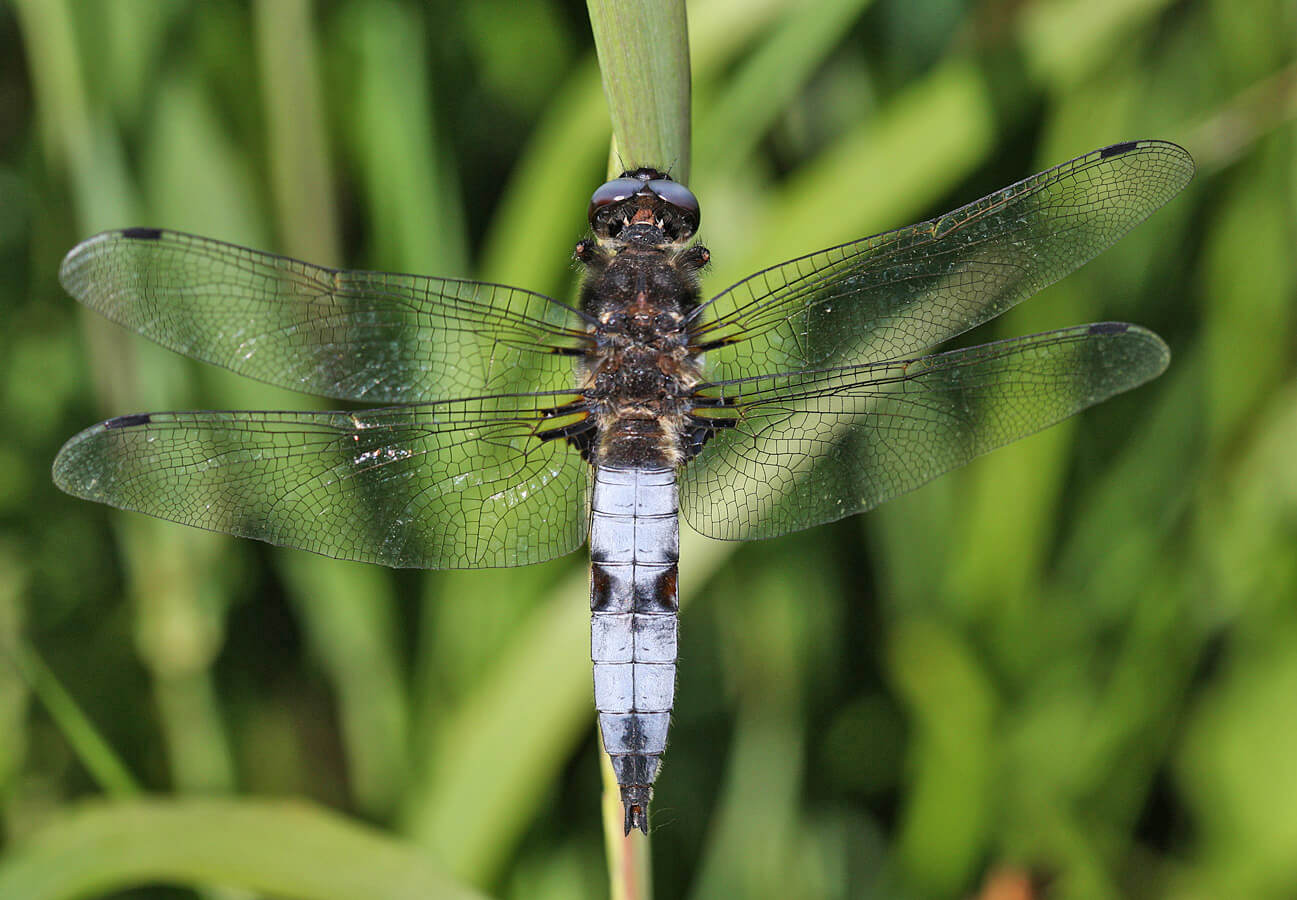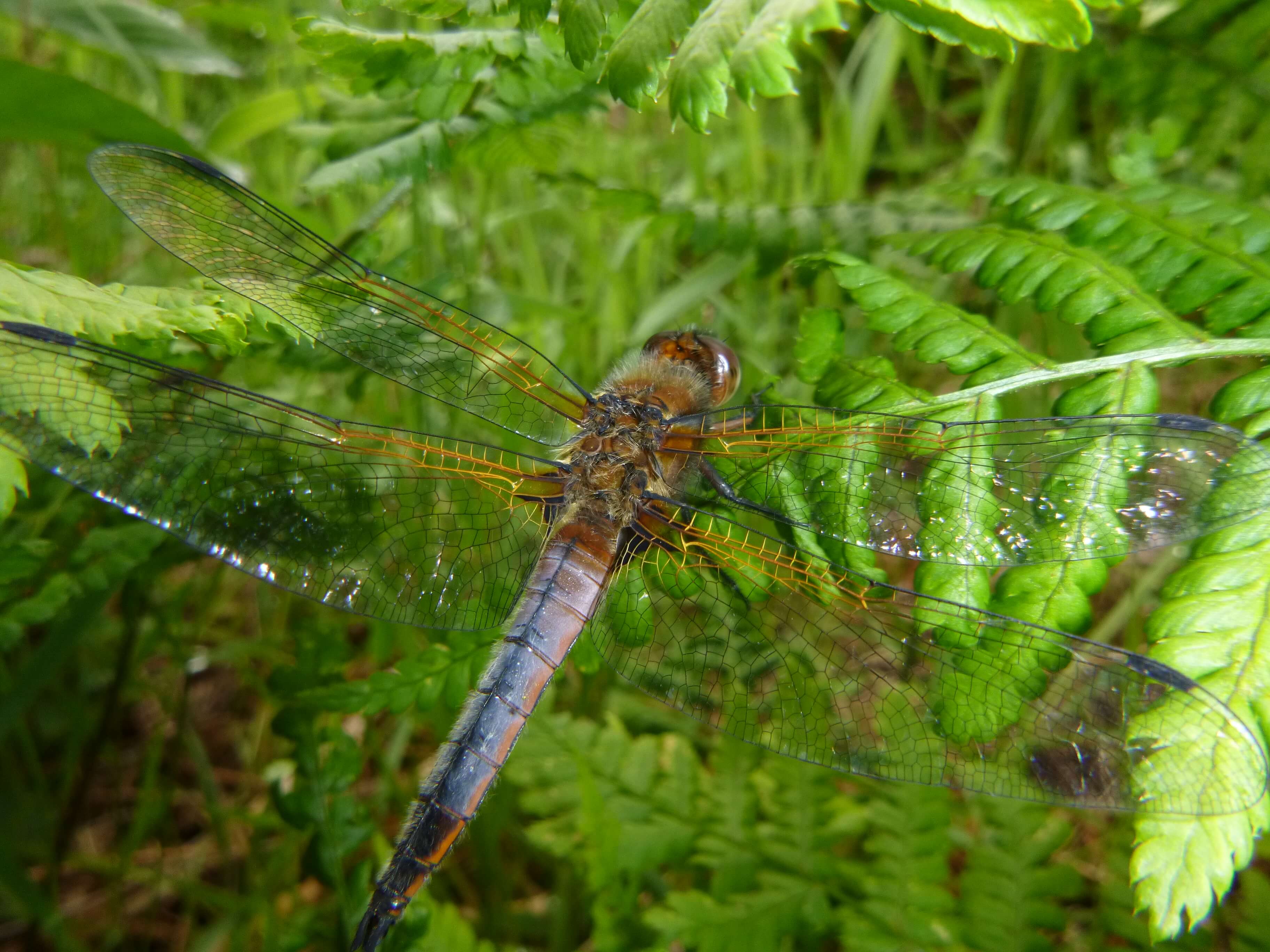Species Information:
Length: 40-49mm
Flight Period: May to July (occasionally also April and early August)
A medium sized dragonfly with blue eyes, sometimes dusky patches on the wing tips and a broad abdomen. Synchronised emergence usually begins towards the end of May.
Male: pale blue pruinescence on the abdomen
Female and immatures: highly distinctive with vivid orange colouration, black triangular shaped markings on the upper surface of each abdominal segment and dark bases to the wings.
Habitat:
The Scarce Chaser is a species of Lowland river floodplains and usually inhabits slow-flowing, meandering rivers and large dykes. Occasionally mature gravel pits and nearby ponds also support populations. Inhabited sites characteristically have good water quality, which supports submerged and floating plants as well as prolific stands of emergent vegetation. Ovipositing females require areas of slow flowing open water, and the adults require some shrub or tree shelter.
Status & Distribution:
L. fulva is scarce in Britain and is consequently listed under category 3 (scarce) in the British Red Data Book on Insects. The Scarce Chaser is restricted to 6 main localities in Norfolk/Suffolk, Sussex, Wiltshire/Somerset, Cambridgeshire, Kent and Dorset/Hampshire. Populations appear to be stable and there is evidence that suggests that it may be expanding its range.
Threats:
The main threats to this species come from the inappropriate river management, river improvement schemes, pollution, eutrophication, over-shading, changing water levels and excessive boat traffic.
Management:
General management principles include maintaining inhabited sites and the adjacent landscape, controlling water quality, controlling boating activity, and undertaking monitoring and research. There are also best practice guidelines for managing inhabited sites, particularly regarding dredging, management of aquatic vegetation, and scrub control.
Similar Species:
The male could be confused with Black-tailed Skimmer or Keeled Skimmer. The blue eyes help to distinguish it.

.jpg)
.jpg)

.jpg)
.jpg)